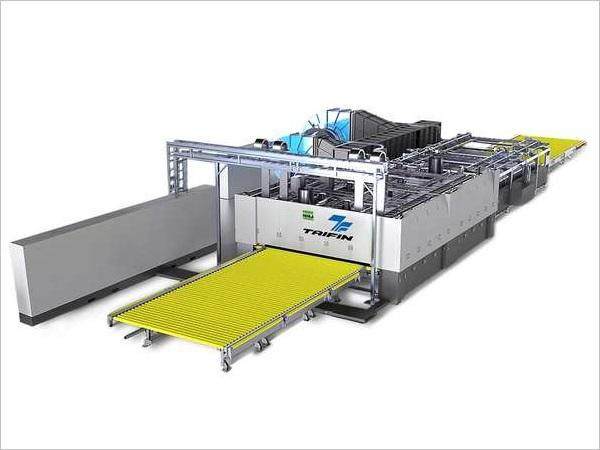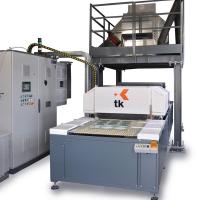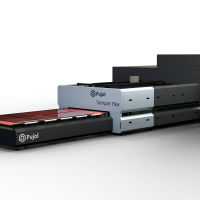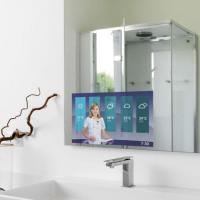
Date: 28 January 2022
Depending on the existing processes’ level of automation and digitalization, there are several approaches toward improving those steps.
The HEGLA Group offers batch optimization, automated batch creation, and a furnace with a self-teaching control system. The integrated concept reduces costs and at the same time, increases efficiency to arrive at the highest level of quality.

Batch optimization and automated batch creation for maximum furnace utilization
In order to optimally utilize furnace time and energy, furnaces must be loaded under maximum compliance with production and quality requirements. HEGLA-HANIC offers batch optimization as a solution for both manual and fully automated furnace loading. The system also calculates an ideal load recommendation for the furnace based on the panes’ data and future installation position.
The display shows where which pane would be optimally located and how it should be aligned in order to attain maximum capacity utilization and high glass quality. “Our batch optimization system also makes it easier to maintain and organize an overview of all panes and production deadlines,” said Managing Director Dr Jan Schäpers of HEGLA-HANIC. For maximum quality, the software takes both the furnace technology values required for variable batch design, including maximum size distribution per batch for example, and technical limitations such as maximum load capacity and throughput times into account. It not only determines optimal batches, but also manages the sequence for automated systems. As a result, only minimal but necessary production gaps occur for technical reasons. “We have designed batch optimization to help you in two ways: it increases your productivity and saves energy at the same time,” explained Schäpers.
In conjunction with automated batch creation and furnace loading, batch optimization promises even greater automation and perfectly meshed processes. “With our sorting system and newly developed batch feed, we provide you with the technology for fully automated furnace loading,” said Bernhard Hötger, Managing Director of the HEGLA Group. The mechanical batch preparation system is based on a combination of conveyor belts that can be lifted to enable highly flexible batch composition based on the software’s recommendation.

Glass with top isotropy values
Additional potential is created when the software and batch creation functions are used in conjunction with CTF furnaces from HEGLA-TaiFin. The furnaces of the German-Finnish manufacturer feature quality “Made in Germany.” They were designed with a high number of internal control zones, thus offering the option to control specific places in the furnace based on product requirements. “The key aspect is that our systems function according to the convection principle, using heat transfer with air. Even with coated panes, this leads to balanced temperature distribution. It is the basis for completely flat glass without haze and excellent isotropy values – ready for installation in facades and high-quality windows,” said Jarno Nieminen from HEGLA-TaiFin.
Integrated concept for glass products, furnaces, and scanners
To improve glass quality even more, HEGLA New Technology has collaborated with HEGLA-TaiFin to develop a concept that integrates the product, furnace, and scanner. A higher-level tuning function monitors production and the resulting quality. And the furnace tuning function directly converts deviations into learning parameters. The approach continuously optimizes both controls and recipes during production. “With these new kinds of algorithms, we fully tap our furnaces’ maximum potential for our customers,” added Nieminen. “The function enables us to make further quality improvements and increase productivity in the process.”
“We have the right solution for almost every furnace automation requirement. From batch optimization that is easily integrated into conventional glass production systems and fully automated loading from our sorting and harp rack systems to flexible transport segments. To attain the highest glass quality, we have linked these processes to our dynamically controlled convection furnaces,” said Hötger.
 600450
600450



























Add new comment